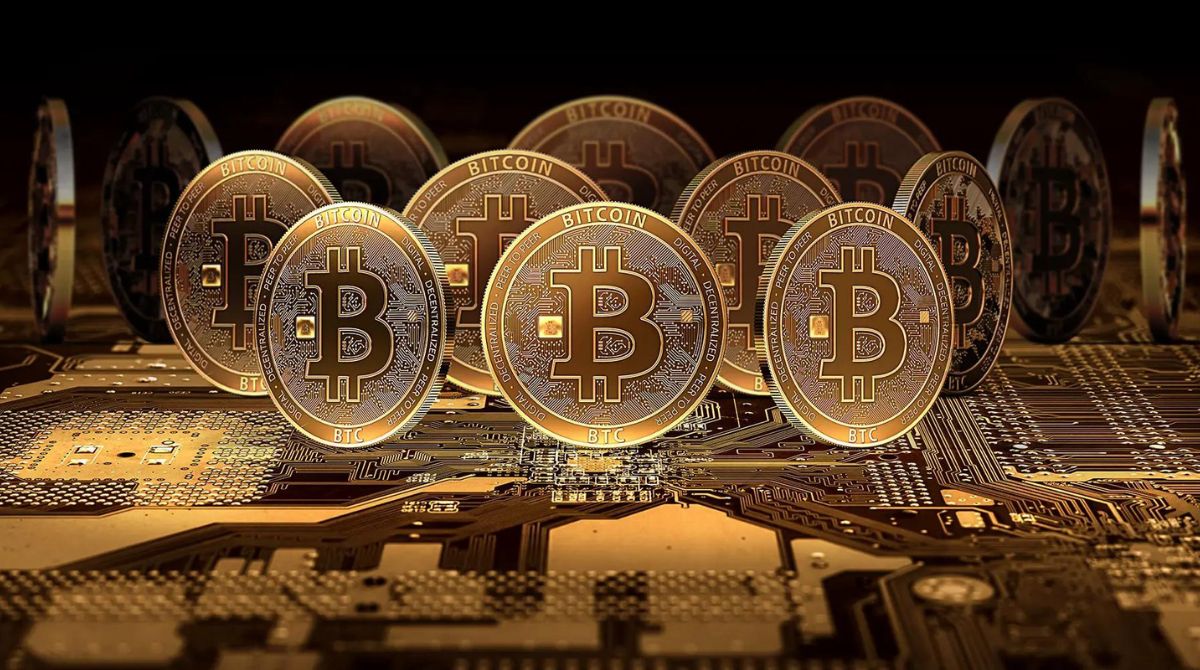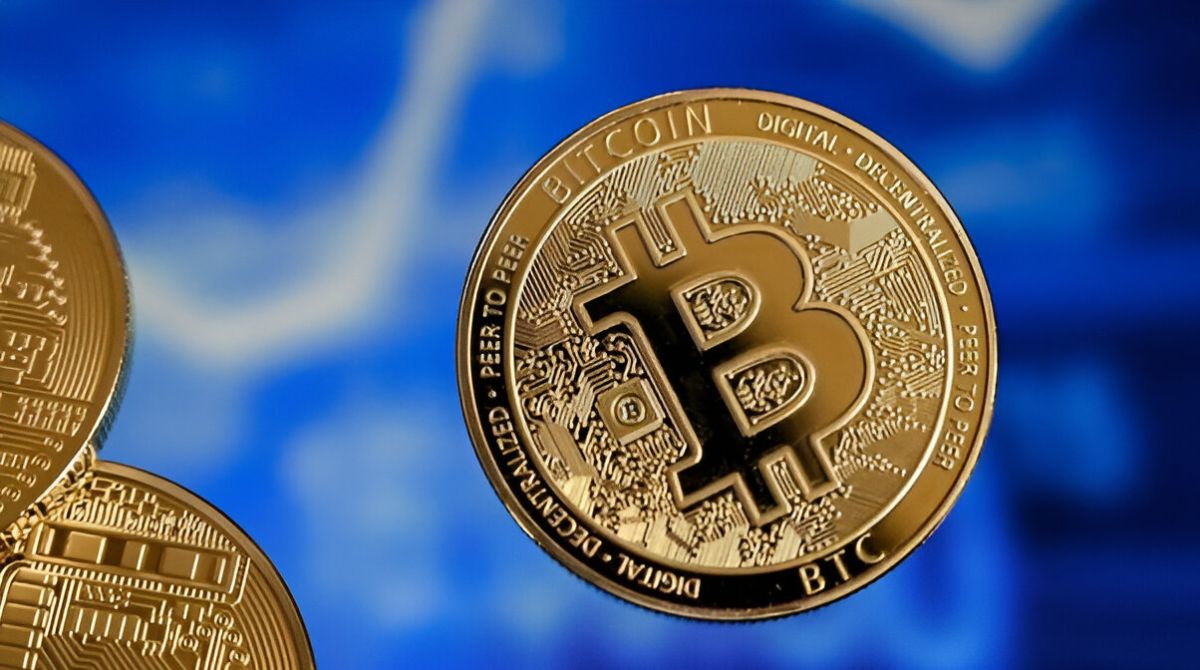Introduction
Welcome to the exciting world of Bitcoin, the revolutionary digital currency that has taken the world by storm. Bitcoin, often referred to as a cryptocurrency, has become a hot topic of discussion among technologists, investors, and everyday individuals seeking financial freedom.
Since its inception in 2009, Bitcoin has grown exponentially, attracting the attention of both enthusiasts and skeptics worldwide. Its decentralized nature and cutting-edge technology have disrupted traditional financial systems, offering a new form of digital currency that operates outside the control of governments and banks.
Bitcoin’s rise to prominence hasn’t been without controversy. Initially associated with illicit activities due to its anonymity, it has since garnered mainstream attention and acceptance. As its popularity continues to skyrocket, it’s essential to understand what Bitcoin is, how it works, and the implications it has on our financial landscape.
In this article, we will explore the various aspects of Bitcoin, from its fundamental principles to the potential it holds for the future. We will delve into its history, benefits, risks, acquisition methods, and even touch upon the fascinating concept of Bitcoin mining.
Whether you’re a curious individual looking to grasp the basics or a seasoned investor seeking deeper insights, this article aims to provide you with a comprehensive understanding of Bitcoin and its place in the digital age.
So, fasten your seatbelt, as we embark on a journey to unravel the mysteries of Bitcoin and discover the possibilities that lie ahead.
What is Bitcoin?
Bitcoin is a decentralized digital currency, often referred to as a cryptocurrency. Unlike traditional currencies such as dollars or euros, Bitcoin operates without the need for a central authority, such as a government or financial institution.
Created by an unknown individual or group using the pseudonym Satoshi Nakamoto, Bitcoin was introduced in 2009 as an open-source software. Its underlying technology, known as blockchain, ensures that transactions are securely recorded and verified.
At its core, Bitcoin is based on cryptography, which means that advanced mathematical algorithms are used to secure transactions and control the creation of new bitcoins. This ensures the integrity and scarcity of the currency, eliminating the possibility of counterfeit or fraudulent activities.
One of the key features of Bitcoin is its decentralization. Transactions are verified by a network of computers, known as nodes, that work together to maintain the integrity of the blockchain. This peer-to-peer network eliminates the need for intermediaries, such as banks, and allows for near-instantaneous and low-cost transactions worldwide.
Another defining characteristic of Bitcoin is its limited supply. There will only ever be 21 million bitcoins in existence, making it a deflationary currency. As a result, many view Bitcoin as a store of value and a hedge against traditional financial systems that are subject to inflation and government control.
Bitcoin transactions are pseudonymous, meaning that while the transactions themselves are recorded on the blockchain, the identities of those involved are not publicly disclosed. This level of privacy has led to concerns over its potential use for illegal activities, although regulations have been implemented to combat this.
In recent years, Bitcoin has gained significant traction as a means of digital transactions and as an investment asset. Its decentralized nature, transparency, and potential for high returns have attracted investors and individuals seeking alternatives to traditional banking systems.
Now that we have a basic understanding of what Bitcoin is, let’s explore how it actually works and the technology behind it in the next section.
How does Bitcoin Work?
Bitcoin operates on a decentralized network, powered by a technology called blockchain. The blockchain is a public ledger that contains a record of all Bitcoin transactions, making it transparent and virtually tamper-proof.
When someone initiates a Bitcoin transaction, it is broadcasted to all the nodes in the network. These nodes then validate the transaction by solving complex mathematical puzzles, a process known as mining. Once the transaction is verified, it is added to a block of transactions, which is then added to the blockchain.
To ensure the security and integrity of the blockchain, Bitcoin uses cryptographic algorithms. Each transaction is encrypted using public and private keys. The public key acts as the address where bitcoins are sent, while the private key is required to access and spend those bitcoins.
Bitcoin mining plays a vital role in the network. Miners use their computational power to solve complex mathematical problems and validate transactions. In return for their efforts, miners are rewarded with newly created bitcoins. This process adds new coins into circulation and maintains the security of the network.
Bitcoin transactions are incredibly secure due to the decentralized and transparent nature of the blockchain. Once a transaction is confirmed and added to the blockchain, it becomes nearly impossible to alter or reverse. This makes Bitcoin transactions resistant to fraud and censorship.
However, the decentralized nature of Bitcoin also presents challenges. The network relies on consensus among the nodes, which means that a majority of the nodes must agree on the validity of transactions. This can result in longer transaction times during periods of high network congestion.
Furthermore, Bitcoin transactions can incur transaction fees. These fees are paid to miners as an incentive for including transactions in the blocks they mine. Higher transaction fees can lead to faster transaction confirmations.
Overall, Bitcoin’s decentralized and transparent system, combined with its cryptographic algorithms, provides a secure and efficient method for conducting digital transactions. It has paved the way for a new era of digital currencies and has the potential to revolutionize the way we exchange value.
The History and Origins of Bitcoin
The story behind Bitcoin begins with a mysterious individual or group using the pseudonym Satoshi Nakamoto. In 2008, Nakamoto published a whitepaper titled “Bitcoin: A Peer-to-Peer Electronic Cash System,” which outlined the principles and technical details of the cryptocurrency.
In January 2009, Nakamoto launched the first version of the Bitcoin software, making it available to the public. The initial users of Bitcoin were mainly tech enthusiasts and developers intrigued by the concept of decentralized digital currency.
Bitcoin gained traction gradually, but it wasn’t until 2010 that its value was first assigned when someone famously exchanged 10,000 bitcoins for two pizzas. This event, known as the “Bitcoin pizza transaction,” marked the first real-world transaction using Bitcoin as a medium of exchange.
Over the years, Bitcoin’s popularity grew, and its value skyrocketed. In 2013, Bitcoin reached its first major price milestone, surpassing $1,000 per bitcoin. This sparked widespread interest and media coverage, leading to an influx of new users and investors.
However, Bitcoin’s journey hasn’t been without its challenges. In 2014, the largest Bitcoin exchange at that time, Mt. Gox, suffered a massive security breach, resulting in the loss of hundreds of millions of dollars’ worth of bitcoins. This event highlighted the need for improved security measures in the Bitcoin ecosystem.
Despite setbacks, Bitcoin continued to gain momentum. In 2017, Bitcoin reached its all-time high price, approaching $20,000 per bitcoin. This was driven by increased adoption, growing recognition from institutional investors, and a surge of interest from the general public.
Bitcoin’s history is also intertwined with the emergence of other cryptocurrencies, known as altcoins. These include Ethereum, Ripple, and Litecoin, among others. Altcoins often leverage similar technology to Bitcoin but offer unique features and functionalities.
Today, Bitcoin is seen as a viable investment option and a means of conducting digital transactions. It has influenced the development of blockchain technology and has inspired the creation of countless other cryptocurrencies.
As the cryptocurrency ecosystem continues to evolve, Bitcoin remains at the forefront, shaping the future of digital currencies and challenging traditional financial systems.
The Benefits of Bitcoin
Bitcoin offers a range of benefits that make it an attractive option for individuals and businesses alike. Let’s explore some of the advantages that Bitcoin brings to the table.
1. Decentralization: One of the core principles of Bitcoin is its decentralized nature. It operates on a peer-to-peer network, eliminating the need for intermediaries like banks. This decentralization provides greater control over personal funds and reduces the risk of censorship or government interference.
2. Security: Bitcoin transactions utilize cryptographic algorithms, making them highly secure. Once a transaction is confirmed and added to the blockchain, it becomes nearly impossible to alter or reverse. This level of security protects against fraud and provides peace of mind for users.
3. Privacy: Bitcoin transactions provide a certain level of privacy by keeping the identities of those involved hidden. While transactions are recorded on the blockchain, the identities associated with them are not publicly disclosed, offering a degree of anonymity.
4. Quick and Low-Cost Transactions: Bitcoin transactions are typically faster and cheaper compared to traditional fiat currencies. International transfers, in particular, can be completed with minimal fees and without the need for intermediaries or lengthy processing times.
5. Financial Inclusion: Bitcoin has the potential to bring financial services to the unbanked and underbanked populations worldwide. With a smartphone and an internet connection, individuals in remote areas can participate in the global economy, access financial services, and transact with anyone in the world.
6. Hedge Against Inflation and Economic Uncertainty: Bitcoin’s limited supply, with only 21 million bitcoins in existence, makes it an attractive hedge against inflation. Unlike fiat currencies that can be subject to government interference and economic volatility, Bitcoin’s scarcity offers a more predictable and potentially stable store of value.
7. Accessibility: Bitcoin can be accessed by anyone with an internet connection, regardless of geographic location, economic background, or financial institution. This accessibility breaks down barriers and opens up opportunities for individuals who may not have had access to traditional banking services.
8. Innovation and Investment Opportunities: The rise of Bitcoin has sparked a wave of innovation in blockchain technology and has created numerous investment opportunities. From startups implementing blockchain solutions to institutional investors diversifying their portfolios, Bitcoin has paved the way for new avenues of growth and development.
These are just a few of the many benefits that Bitcoin brings to the table. As the cryptocurrency continues to mature and gain wider adoption, it has the potential to shape the future of finance and revolutionize the way we transact and store value.
The Risks and Challenges of Bitcoin
While Bitcoin offers a range of benefits, it also comes with its fair share of risks and challenges. It’s important to be aware of these factors before diving into the world of Bitcoin. Let’s explore some of the key risks and challenges associated with Bitcoin.
1. Price Volatility: Bitcoin is known for its extreme price volatility. Its value can fluctuate significantly in short periods, which can lead to substantial gains or losses for investors. This volatility is influenced by various factors, including market speculation, regulatory changes, and global economic conditions.
2. Regulatory Uncertainty: The regulatory landscape surrounding Bitcoin is still evolving. Different countries have varying stances on cryptocurrencies, which can create uncertainty for users and businesses. Regulatory changes and government interventions can impact the acceptance and adoption of Bitcoin.
3. Security Risks: While Bitcoin transactions themselves are secure, the infrastructure surrounding Bitcoin presents security risks. Cyberattacks targeting cryptocurrency exchanges and wallets have occurred, resulting in the loss of millions of dollars’ worth of Bitcoin. Users must take precautions to protect their private keys and choose reputable platforms for transactions.
4. Limited Acceptance: While Bitcoin has gained significant popularity, it still faces limited acceptance as a form of payment. The number of businesses and merchants willing to accept Bitcoin is growing, but it is not yet widespread. This can restrict the usability and practicality of Bitcoin as a widely accepted currency.
5. Scalability Concerns: As Bitcoin’s popularity has grown, so have concerns around its scalability. The current blockchain structure has limited transaction capacity, leading to network congestion and increased transaction fees during times of high demand. Ongoing efforts are being made to address these scalability challenges.
6. Regulatory Compliance: With the increasing attention on cryptocurrencies, regulatory compliance has become a significant concern. Users must comply with anti-money laundering (AML) and know-your-customer (KYC) regulations, which can require providing personal information and may hinder the privacy aspect of Bitcoin transactions.
7. Economic and Market Risks: Bitcoin’s value is influenced by market forces and macroeconomic factors. Changes in investor sentiment, economic recessions, and global financial instability can impact Bitcoin’s price. Additionally, the emergence of competing cryptocurrencies poses a risk to Bitcoin’s dominance in the cryptocurrency market.
8. Lack of Consumer Protection: Unlike traditional financial systems, Bitcoin transactions do not benefit from the same level of consumer protection mechanisms. If a user makes a mistake in a transaction or falls victim to scams or fraud, there may be limited recourse for recovery.
It is important to carefully evaluate these risks and challenges when considering involvement with Bitcoin. Stay informed, exercise caution, and seek professional advice if needed to navigate the complexities of the cryptocurrency landscape.
How to Acquire and Store Bitcoin
If you’re looking to acquire and store Bitcoin, there are several steps you need to take to ensure a safe and seamless experience. Let’s explore the process of acquiring and storing Bitcoin.
1. Choose a Bitcoin Wallet: Before you can acquire Bitcoin, you’ll need a Bitcoin wallet to store your digital currency. Wallets can be software-based, hardware-based, or even online platforms. Each type has its own level of security and convenience, so consider your needs and preferences when selecting a wallet.
2. Select a Secure Exchange: To acquire Bitcoin, you’ll need to register and trade on a cryptocurrency exchange. There are numerous exchanges available, but it’s essential to choose a reputable and secure platform. Look for exchanges that have robust security measures, a user-friendly interface, and a good reputation in the cryptocurrency community.
3. Complete the Verification Process: Many exchanges require users to undergo a verification process, commonly known as Know Your Customer (KYC) verification. This process typically involves providing identification documents and proof of address. Completing the verification process ensures compliance with regulatory requirements and enhances the security of the exchange.
4. Acquire Bitcoin: Once you have a verified account, you can deposit funds into your exchange account and purchase Bitcoin. You can buy Bitcoin using various methods, such as bank transfers, credit/debit cards, or even other cryptocurrencies, depending on the available options provided by the exchange.
5. Transfer Bitcoin to Your Wallet: After purchasing Bitcoin on the exchange, it’s generally recommended to transfer your Bitcoin to your personal wallet. This provides you with full control over your Bitcoin and eliminates the risk of losing your funds if the exchange is compromised. Simply provide your wallet address and initiate a withdrawal from the exchange to transfer your Bitcoin.
6. Backup Your Wallet: It’s crucial to backup your wallet’s private keys and secure them in a safe location. This ensures that you can recover your Bitcoin in case of a hardware failure, loss, or theft. Write down your private keys on a piece of paper or use a hardware device specifically designed for securely storing cryptocurrency keys.
7. Stay Updated and Secure: Regularly update your wallet software and stay vigilant against potential security threats. Use unique and strong passwords for your wallet and enable two-factor authentication for an added layer of security. Beware of phishing attempts and only download wallet software or apps from official sources.
8. Be Mindful of Security Practices: When dealing with Bitcoin, it’s crucial to practice good security habits. Be cautious when sharing your wallet address and avoid posting it publicly. Be vigilant of scams and only conduct transactions with trusted parties. Additionally, consider diversifying your storage methods by utilizing both online and offline wallets for added security.
By following these steps and adopting sound security practices, you can successfully acquire and store your Bitcoin, ensuring that your digital assets remain safe and accessible.
Understanding Bitcoin Mining
Bitcoin mining is a fundamental process that powers the Bitcoin network, verifies transactions, and adds new bitcoins into circulation. Mining is essential for ensuring the security, integrity, and decentralized nature of the blockchain. Let’s delve into the concept of Bitcoin mining and how it works.
1. Mining Basics: Bitcoin mining involves using powerful computers to solve complex mathematical puzzles. Miners compete with each other to solve these puzzles, and the first miner to find the solution gets to add a new block of transactions to the blockchain and is rewarded with newly minted bitcoins.
2. Proof of Work: The mathematical puzzles that miners solve are based on a cryptographic hashing algorithm called SHA-256. Miners repeatedly hash different inputs until they find a solution that meets certain criteria, known as the proof of work. This proof of work ensures that miners have invested computational power and makes it difficult for attackers to alter the blockchain.
3. Difficulty Adjustment: The difficulty of the mining puzzles adjusts approximately every two weeks to maintain a consistent rate of block creation. This adjustment ensures that new blocks are added to the blockchain approximately every 10 minutes, regardless of changes in computational power among the miners.
4. Mining Rewards: Miners are incentivized to participate in the mining process through block rewards. Initially, the block reward was 50 bitcoins, but it halves approximately every four years in a process known as the “halving.” Currently, the block reward stands at 6.25 bitcoins. In addition to the block reward, miners also earn transaction fees from the transactions included in the block they mine.
5. Mining Pools: As mining has become more competitive and resource-intensive, individual miners often join mining pools. In a mining pool, several miners combine their computational power and work together to solve mining puzzles. Once a puzzle is solved, the rewards are distributed among the pool members based on their contribution.
6. Energy Consumption: Bitcoin mining requires a significant amount of computational power, which translates into high energy consumption. As a result, concerns have been raised about the environmental impact of Bitcoin mining. However, it’s worth noting that the energy consumption of the banking and gold mining industries exceeds that of Bitcoin mining.
7. Evolution of Mining: Over the years, mining has evolved. Initially, mining could be done using regular CPUs, then it shifted to GPUs. Today, specialized hardware known as ASICs (Application-Specific Integrated Circuits) is predominantly used for mining. These dedicated machines are designed specifically for mining Bitcoin and offer significantly higher hashing power.
Understanding Bitcoin mining provides insights into the backbone of the Bitcoin network. It ensures the security and trustworthiness of transactions, and the miners play a crucial role in maintaining the integrity of the blockchain. Mining continues to evolve, adapting to technological advancements and increasing demand, as Bitcoin continues to gain acceptance and recognition in the world of finance and beyond.
The Future of Bitcoin
The future of Bitcoin holds both promise and uncertainty. As the pioneering cryptocurrency, Bitcoin has already made a significant impact on the financial landscape. Let’s explore some potential trajectories for the future of Bitcoin.
1. Mainstream Adoption: Bitcoin’s growing acceptance by institutional investors, corporations, and even governments indicates a path towards mainstream adoption. As more traditional financial institutions integrate Bitcoin into their operations, it is likely to gain further legitimacy and widespread use.
2. Regulations and Institutional Involvement: Regulatory frameworks are still being developed to govern cryptocurrencies like Bitcoin. As governments and regulatory bodies establish clearer guidelines, it is expected that institutional involvement will increase. This could bring further stability and open doors for more investors to participate in the Bitcoin market.
3. Technological Advancements: Technological advancements in blockchain technology, such as the development of second-layer solutions like the Lightning Network, hold promise for scaling Bitcoin and enhancing its functionality. These advancements aim to address the scalability and transaction speed concerns, making Bitcoin more efficient for everyday transactions.
4. Integration with Traditional Finance: The integration of Bitcoin with traditional financial systems through initiatives like cryptocurrency payment processors and Bitcoin-backed financial products may further bridge the gap between digital currencies and traditional finance. This integration could pave the way for a more seamless and interconnected global financial ecosystem.
5. Stablecoin Integration: The rise of stablecoins, which are cryptocurrencies pegged to the value of traditional assets like fiat currencies, presents an opportunity for Bitcoin integration. Stablecoins can offer stability while leveraging the benefits of Bitcoin’s decentralized nature. This integration could facilitate easier entry and exit points from fiat currencies to Bitcoin.
6. Global Financial Uncertainty: Bitcoin may see increased interest during times of economic uncertainty or currency instability. As a deflationary asset, Bitcoin could serve as a hedge against inflation and loss of purchasing power. Economic crises or geopolitical events may drive individuals and institutions to seek alternative stores of value, such as Bitcoin, thus increasing demand.
7. Environmental Concerns: As Bitcoin mining continues to grow, addressing energy consumption and environmental concerns will become paramount. Initiatives focusing on renewable energy sources and the development of more energy-efficient mining methods may help mitigate the carbon footprint associated with Bitcoin mining.
8. Continued Innovation: Bitcoin has sparked a wave of innovation in the cryptocurrency space. The development of new technologies, applications, and financial instruments will continue to drive Bitcoin’s evolution. From decentralized finance (DeFi) to non-fungible tokens (NFTs), the possibilities for Bitcoin and its underlying blockchain technology are vast.
The future of Bitcoin is dynamic and holds immense potential. While challenges and uncertainties remain, Bitcoin’s disruptive nature and its ability to provide financial sovereignty and inclusivity position it as a force to be reckoned with in shaping the future of finance.
Conclusion
Bitcoin has truly revolutionized the world of finance, offering a decentralized digital currency that operates outside the control of governments and traditional financial institutions. Throughout this article, we have explored various aspects of Bitcoin, from its definition and workings to its history, benefits, risks, and future prospects.
Bitcoin’s decentralized nature, built on the blockchain technology, provides individuals with greater control over their funds and opens up new avenues for financial inclusion. The benefits of Bitcoin, including quick and low-cost transactions, enhanced security, financial sovereignty, and potential for high returns, make it an attractive option for individuals and businesses seeking alternatives to traditional financial systems.
However, it is essential to understand the risks and challenges associated with Bitcoin, such as price volatility, regulatory uncertainty, security risks, and limited acceptance. Engaging with Bitcoin requires caution, knowledge, and adherence to best security practices to protect one’s digital assets.
The future of Bitcoin holds great promise. Continued mainstream adoption, regulatory clarity, integration with traditional finance, technological advancements, and innovation will shape the path ahead for Bitcoin. As the cryptocurrency ecosystem evolves, Bitcoin’s influence will likely extend beyond its digital borders, impacting the global financial landscape.
It is important to stay informed and adapt to the ever-changing nature of Bitcoin and the wider cryptocurrency market. By understanding the fundamental principles of Bitcoin, conducting thorough research, and being mindful of security practices, individuals can navigate this transformative financial landscape with confidence.
Whether Bitcoin will ultimately become a globally accepted currency or serve as a store of value alongside traditional financial systems remains to be seen. Yet, in its relatively short existence, Bitcoin has disrupted the status quo, inspired countless innovations, and brought the concept of digital currency to the forefront of conversation.
As technology continues to advance and society embraces the potential of decentralized finance, Bitcoin’s impact will only become more profound. So, keep a close eye on the developments surrounding Bitcoin, as it continues to reshape the way we perceive and interact with the concept of money.

























